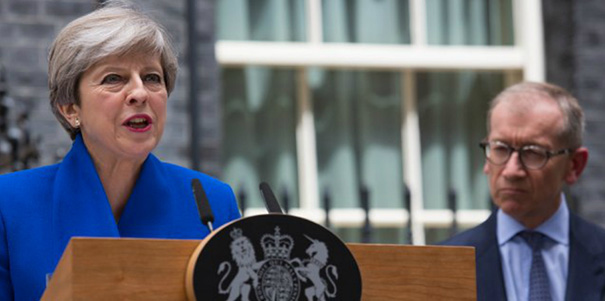Last night’s polls have delivered yet another surprise election result for the UK, writes Amy Hopkinson, Associate Corporate Director of Weber Shandwick.
 Amy Hopkinson
Amy Hopkinson
Less than a year since Britain made the decision to leave the EU, we were back to the ballot box yesterday to give Theresa May the mandate she needed to steer us through strong and stable Brexit negotiations. Or so we thought…
The reality is that we’ve woken up to a hung parliament, with the expectation that the Conservatives will now have to rule from a position of minority government, steering us through the next chapter of EU talks with a potential second General Election looming for the Autumn.
Given the Conservatives’ position in the polls at the start of this campaign (they were 20 points ahead when the election was called), it is hard to fathom just quite how this lead diminished, to be eventually translated into less than a parliamentary majority.
What is clear already is that this election has played out in a different way to any other, most notably in relation to the influence levels of traditional media outlets over the poll results.
Early indications, including from the National Union of Students, suggest that the turnout amongst 18-24 year olds was a great deal higher than usual, with many backing Labour, making this truly an election influenced by younger voters. This is a marked increase from other recent General Elections, and even up on the respectable 64% who went to the polls on the EU referendum. These results support the notion that this was a Brexit election after all – with the young kicking back against the older generation who they view as having unfairly chosen to take them out of Europe.
If we look at campaign media strategy, this election has been one for the social media generation. For the Jeremy Corbyn camp in particular, there has been a concerted effort from younger supporters to (quite literally) rally round him through the use of Facebook and Twitter. Adopting an influencer-led approach to engagement, the Corbyn campaign seems to have successfully courted the younger vote. Suggestions are that, as an unpaid approach, the party won’t have been able to target particular seats (as the poll results support). However, it could well have helped to create an overall percentage growth in Labour’s share of the vote, meaning that nobody seems to be calling for Corbyn’s resignation today.
Traditional media, too, has continued to play its part, and we must not underestimate the bold claims and assertions made by the nationals throughout the campaign. With papers such as The Daily Express telling its readers to ‘Vote for May’ and The Sun doing the same, the social media fight back has been countered by a traditional approach targeting older voters. In a style reminiscent of the 1990s, where it was The Sun ‘wot won it’ for John major in 1992 and ‘wot swung it’ for Labour in 1997, this election has made clear that the media still has a crucial part to play in influencing voter intention, but only for older generations. The fact is that most of the traditional media outlets backed May (or at least didn’t back Corbyn), but the Conservatives still don’t have a majority. This tells us that, although they still undoubtedly hold sway, endorsements from the traditional press are no longer the only ones parties need to secure to emerge victorious.
What happens next is (truly) anybody’s guess, but with another General Election potentially on the cards, and Brexit negotiations due to start shortly, we can expect to see much more campaigning by media (both traditional and social) in the months to come.









